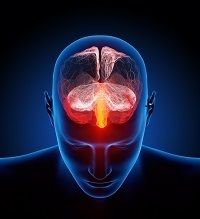Migraine and Depression: It's All the Same Brain
An estimated 40% of migraine sufferers also have signs of depression and more than 50% of migraine patients have some form of anxiety disorder. Treating these comorbidities is more art than science, says Mia Minen, MD, Director of Headache Services at NYU Langone Medical Center. In a recent interview she discussed the treatment options ranging from standard drugs like triptans, to Botox, to biofeedback.

When a patient suffers from both migraines and depression or other psychiatric co-morbidities, physicians have to treat both. It’s a common situation, since 40% of migraine patients are also depressed. Anxiety is even more prevalent in these patients. An estimated 50% of migraine patient are anxious—whether with generalized anxiety, phobias, panic attacks, or other forms of anxiety, said Mia Minen, MD Director of Headache Services at NYU Langone Medical Center.
Health care costs in treating these co-morbid patients are 1.5 times higher than for migraine patients without accompanying psychiatric disorders.
But sorting out whether one problem is causing the other is not always easy, she said in a recent interview at NYU Langone. “It’s really interesting, which came first,” she said, “We really don’t know.”
There may be a bidirectional relationship with depression. Anxiety may precede migraines, then depression may follow.
Fortunately, she said, the question of which problem came first doesn't really matter that much.
“It’s all one brain, one organ, and some of the same neurotransmitters are implicated in both disorders.” Serotonin is affected in migraine just as it is in depression and anxiety, she said. Dopamine and norepinephrine are also related both to migraines and psychiatric comorbidities.
“So it’s really one organ that’s controlling all these things,” Minen said.
The first step in treatment is having patients keep a headache diary to track the intensity and frequency and what they take when they feel it coming on.
For a mild migraine that might be ibuprofen or another over-the-counter pain killer.
If the migraine is moderately severe there are 7 migraine-specific medications that are effective, she said. There are oral, nasal, and injectable forms of triptans a family of tryptamine-based drugs. “We sometimes tell patients to combine [the triptan] with Naprosyn,” she said.
If triptans are contraindicated because the patient has other health problems, there are still more pharmaceutical options.
Those include some classes of beta blockers, antiseizure medications, and tricyclic antidepressants at low doses.
The drug regimen may vary with the particular co-morbidity. For instance, for migraines with anxiety, venlafaxine might work. If patients have sleep disturbances, amitriptyline might be effective. “Lack of sleep is also a trigger for migraine,” she noted.
The toughest co-morbidity to treat in patients with migraine is finding a regimen that works for patients who are taking a lot of psychiatric medications, like SSRIs and antipsychotics.
For older patients with migraines plus cardiovascular disease, drug choices are also limited.
Botox injections seem promising, but Minen is cautious. “It’s a great treatment for patients with chronic migraines but they have to have failed 2 or 3 medications before they qualify for Botox.”
Treatment involves 31 injections over the forehead, the back of the head and the neck. Relief lasts about 3 months, she said.
In addition to pharmaceutical treatment, there are cognitive behavior approaches that can work, like biofeedback and progressive muscle relaxation therapy.
Opioids are not the treatment of choice, she said. They have not been shown to be effective, Minen said and reduce the body’s ability to respond to triptans.
“For chronic migraine, studies don’t show opioids enable patients to return to work; there is no objective study showing they work,” and their uses raises other problems. Patients used to taking opioids who go to an emergency room and request them may find themselves suspected of drug-seeking behavior. “It’s hard for doctors and patients,” she said, when patients ask for opioids “It puts doctors in a predicament.”
New drugs are on the horizon, she said. “Calcitonin gene related peptide antagonists look good,” and unlike triptans are not contraindicated for people at risk of strokes or heart attacks.
For now, said Minen, treating migraine and co-morbidities “is more an art than a science,” she said, “But a large majority of patients do get better.”
In the videos below, Minen discusses her work and her patients.